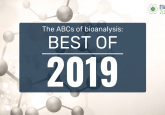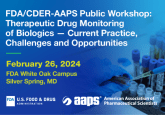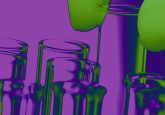The Reid Bioanalytical Forum 2019 – conference highlights

The Bioanalysis and Bioanalysis Zone team attended the 23rd International Reid Bioanalytical Forum (23–26 September, Cambridge, UK). The 3-day conference was organized under the auspices of the Chromatographic Society and aimed to encourage younger scientists to learn from more experienced researchers through sharing challenges as well as successes. In this report, we share five of our key highlights and take away messages from the conference.
1. Challenges and solutions to the bioanalysis of large molecules by LC–MS/MS
When analyzing large molecules scientists generally chose from two techniques: LBA or LC–MS. The decision can depend on selectivity and sensitivity. Shane Needham (Alturas Analytics, ID, USA) explored different methods that can improve the selectivity and sensitivity for the analysis of peptides and large molecules from biological fluids by LC–MS/MS. These methods included: offline sample preparation, HRMS, ion mobility applications, derivatization and microflow LC–MS/MS with optimal ESI source design. Each of these were used to improve the selectivity, sensitivity and productivity of the analysis of large molecules from biological fluids. Shane explained how the limits of quantitation were improved by more than ten times and the productivity was improved by more than 50%.
2. Analytical challenges in characterizing the human exposome
The exposome is the environmental complement to the genome and forms the background to research aimed at identifying key environmental determinants of health. Study of individuals in populations at critical time points promise to provide informative snapshots that can help understand gene-environment interactions and reduce disease. In his presentation, Toby Athersuch (Imperial College, London, UK) discussed different analytical platforms for analyzing these biosamples including NMR and mass spectrometry-based methods that can provide metabolic data.
3. Dynamic and disordered proteins – how could smell identify Parkinson’s Disease?
Mass spectrometry can be coupled with electrospray ionization to identify proteins and reveal the stoichiometry of protein complexes. This coupled technique can elucidate the conformational state of proteins including natively folded, denatured and amyloid. Perdita Barran (University of Manchester, UK) discussed how mass spectrometry and ion mobility can provide averaged collision cross sections of the ionized protein forms, which can reveal the conformational landscape in the absence of the solvent. She went on to explain how her research team have been involved in developing the first chemical test for Parkinson’s Disease through working with Joy Milne – a women who can identify Parkinson’s Disease through smell.
4. Free/active and total drug quantification by LBA and LC–MS
As part of drug development, it is important to elucidate the pharmacokinetic properties of new drug candidates. Data provided for modeling is required to be of good quality. Free/active exposure is considered important to generate a meaningful understanding and interpretation of PK/PD data. However, total drug data could be required to gain an understanding of the drug clearance. Roland Staack (Roche, Basel, Switzerland) concluded his presentation by stating that LBA and LC–MS are equally suitable technologies for the bioanalysis of free/active and total drug.
5. Next generation – the developing pharma-CRO relationship
The pharma-CRO relationship has evolved over the years. In previous decades rapidly evolving bioanalytical technologies enabled pharmacologists to gain a vast amount of knowledge and thus allowed pharma companies to maintain bioanalytical capabilities. However, as technology development slowed down pharma companies started to outsource bioanalytical capabilities and reduced their in-house capacity. Currently, CRO’s now have huge technology skillsets and have become important resources for pharma to learn from and acquire technological and scientific expertise. Joanne Goodman (AstraZeneca, Cambridge, UK) explained key priorities when looking for a CRO including technical capabilities, assay platforms and scientific leadership.
For a full list of upcoming conferences and events, click here.






